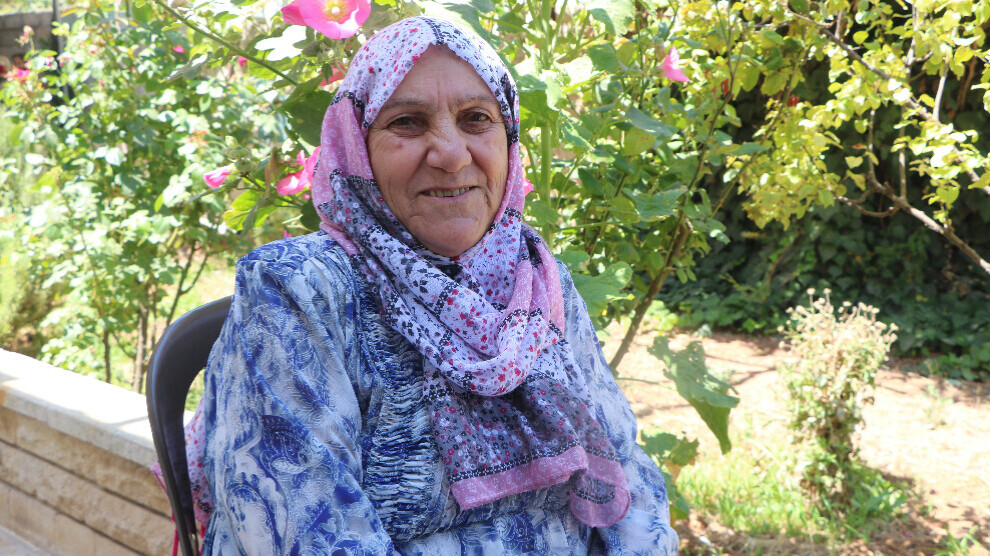Emîra Bekir: Rajo was like paradise before it was occupied
In an interview with NuJINHA, Emîra Bekir talked about the history and natural beauty of the Rajo town of Afrin Canton.

HESNA MIHEMED
Shahba- Located in the northwest of Afrin Canton and surrounded by mountains from all sides, the town of Rajo is a region known for its forestland and nature. The houses in the town are built on a 585-metre-high limestone ridge. The main source of income in the town is agriculture, particularly olive cultivation. Famous for its historical places, the town has a mountain named “Kevirê Ker (English: Deaf Stone)”. The mountain is named deaf stone because when you scream from one side of the mountain, your scream cannot be heard from the other. The town also has a place named “Bride Stone”. According to legends, a woman, who does not want to marry, arrives at the stone on her wedding day and says, “I will turn to stone but not be the destiny of that man” and then she turns to stone. According to official documents, there are eight historical places in the town. Their names are: Cûbana Well, Hebişko Hill, Hesen Nasir Hill, Elemdara Hill, Qebê Hill, Qewaqa Hill, Kişûr Hill and Elîbîskê.
They were plundered by the Turkish state
Rajo is one of the towns of Afrin occupied by the Turkish state. All historical places and sites in the town were destroyed and plundered by the Turkish state and Turkish-backed factions in order to destroy the history of the town. Ancient mosaics in Elîbîskê were stolen by Turkish-backed factions. In an interview with NuJINHA, Emîra Bekir, a displaced woman from the Hec Xelîl village of Rajo, talked about the history and natural beauty of the town of Rajo.
‘It was just like paradise’
Noting that the town of Rajo is known for its natural beauty, she said, “When we woke up in the morning, we felt the smells of nature and heard birds chirping sounds. All kinds of fruits and vegetables were grown in the town so everyone would go to work in the morning. Rajo was just like paradise for us. It was famous for its mountains, plains and historical places. Two rivers named Betman and Resh flow through it. There was a strong bond of love among the people, who took part in the revolution in Rojava.”
Shines in the town
Emîra Bekir also talked about the religious places in the town. “There are sacred places in the town. The shines of Mihemed Elî and Şêx Mûsa are two of them. Breastfeeding mothers used to visit the shine of Şêx Mûsa so that they could increase their milk supply for their babies. The shine of Mihemed Elî was also one of the places frequently visited by people from other villages.”
Emîra Bekir also told us that the residents of the town wore local clothes and cooked their local dishes to preserve their culture. “The people of Rajo always preserve their culture. Local clothes and dishes are very important for them. They have two famous dishes called Sembûsek and Kutayî.”
